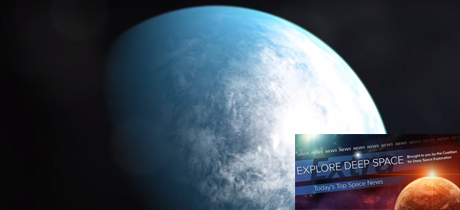In Today’s Deep Space Extra… Plans to launch NASA’s James Webb Space Telescope (JWST) in March 2021 will slip in response to workplace restrictions imposed in response to the coronavirus pandemic. NASA is now targeting July 20 for the launch of the Perseverance Mars 2020 rover, a three day slip for repairs to ground equipment.
Human Space Exploration
NASA SLS boosters headed to Kennedy Space Center
Coalition Member in the News – Northrop Grumman, United Launch Alliance
Orlando Sentinel (6/8): Critical solid rocket booster segments manufactured in Utah by Northrop Grumman are making their way to NASA’s Kennedy Space Center (KSC), where they will be joined to the core of the Space Launch System (SLS) for the Artemis 1 launch planned for 2021. The mission will send an uncrewed Orion crew capsule around the Moon and back to Earth for an ocean splashdown and recovery. Artemis 2, a similar mission with astronauts is to follow. Then comes Artemis 3, a landing at the Moon’s south pole with astronauts in 2024.
Space Science
NASA confirms JWST will miss March 2021 launch date
Coalition Member in the News – Northrop Grumman
SpaceNews.com (6/10): The James Webb Space Telescope’s (JWST) planned March 2021 launch date has slipped in response to workplace restrictions imposed because of the coronavirus pandemic, Thomas Zurbuchen, NASA’s Science Mission Directorate associate administrator told the National Academies of Science’s Space Studies Board on Wednesday. The observatory intended to study the earliest stars and galaxies and assess the atmospheres of Earth-like extrasolar planets for signs of biomarkers is undergoing pre-launch preparations at Northrop Grumman facilities in Redondo Beach, California. Some once restricted on-site work has begun to return. A new schedule assessment is planned for July.
Mars Perseverance rover targeted to launch July 20
Coalition Member in the News – United Launch Alliance
NASA (7/10): Plans to launch NASA’s Perseverance Mars 2020 Rover from Cape Canaveral Force Station, Florida, have moved from July 17 to July 20 at 9:15 a.m., EDT, to compensate for repairs to ground support equipment, a crane used to prepare the United Launch Alliance (ULA) Atlas 5 launch vehicle. The launch period for Perseverance extends from July 17 to August 11. With a successful liftoff, the rover will land at Jezero Crater at Mars on February 18, 2021. There, it is to collect samples of Martian rock for eventual return to Earth and studies to assess whether Jezero and an adjacent stream delta once offered a habitable environment.
Astronomers and SpaceX coming together to make Starlink megaconstellation less disruptive to science
Space.com (6/10): Working with the American Astronomical Society and others, SpaceX is addressing the brightness issue posed by the planned launch of hundreds of small internet Starlink connectivity satellites. Efforts are underway to dim the Starlinks and those spacecraft planned by competitors for launch into low Earth orbits where they disrupt observations with ground-based telescopes.
Astronomers have found the star/exoplanet combo that’s the best twin to the Sun/Earth
Universe Today (6/9): Kepler-160 is a star very much like the sun and 3,140 light years away. Two planets, Kepler-160 b and Kepler-160 c, have long been known to orbit. By combing through data gathered by NASA’s Kepler Space Telescope, scientists have found evidence for two more planets in orbit. Designated KOI-456.04 for Kepler object of interest, one of the two newly discovered planets appears to have some intriguing Earth-like qualities.
Saturn’s moon Titan is drifting off into space, NASA says
Futurism.com (6/8): Saturn’s moon Titan, the destination for a future NASA mission, is slowly escaping its host planet, a finding that could prompt an adjustment in basic assumptions about the solar system. The find may be related to a better understanding of how the rings and moons of Saturn formed, and forces that may extend across the solar system all together.
Astronauts on the International Space Station (ISS) are helping to forge a bizarre form of matter that does not exist in nature
Business Insider (6/11): The absence of gravity aboard the International Space Station (ISS) has made it possible for scientists to study a new form of matter known as Bose-Einstein condensates, which are clouds of atoms that have been chilled to super low temperatures in a vacuum container to reveal their subatomic characteristics. The research could help scientists unravel the mysteries of dark energy and gravitational waves.
Other News
China launches Haiyang-1D ocean observation satellite
SpaceNews.com (6/10): A Chinese Long March 2C rocket on Wednesday launched the Haiyang-1D ocean observation satellite, a spacecraft based on a small satellite platform. The satellite is equipped to monitor ocean temperatures and color and monitor ocean going vessels.

